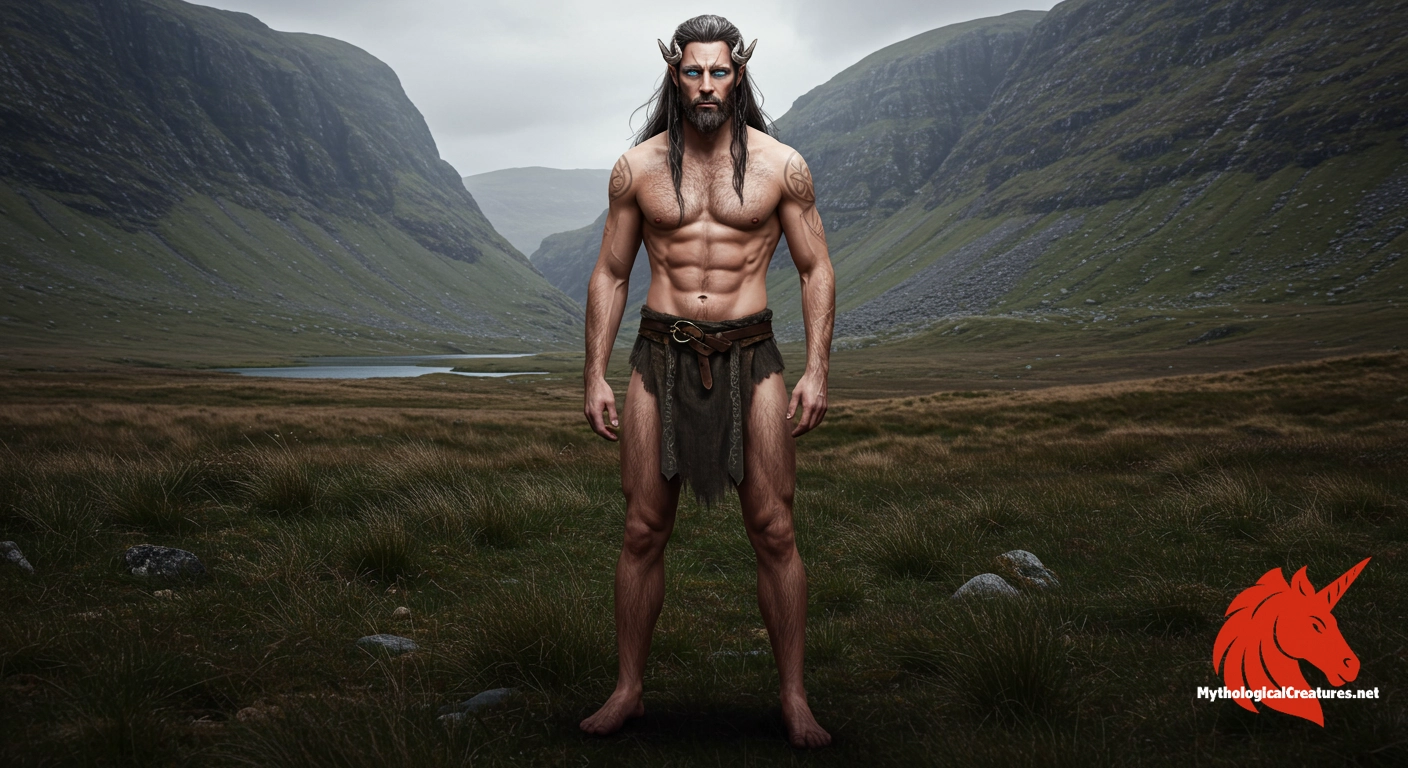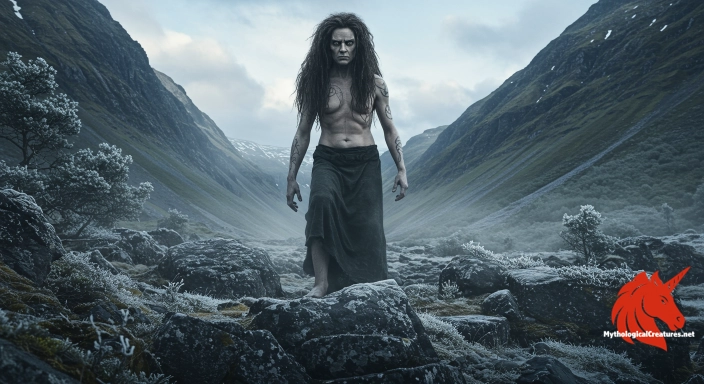Fráech: Fráech is a Connacht hero and demigod from the Ulster Cycle of Irish mythology.

Fráech
Fráech - Fráech is celebrated for his heroic exploits and renowned beauty, embodying the ideals of courage and allure in Irish myth.
Origins & First Encounters
Fráech emerges as one of the most captivating figures in early Irish mythology, seamlessly bridging the realms of mortals and the divine with his storied exploits.
Born of human valor and otherworldly influence, his lineage is marked by the union of Idath and Bébinn, which in turn connects him to the revered goddess Boann.
His association with the Fir Domnann not only hints at ancient tribal legacies but also lends an air of mystery to his origin.
As a prominent hero in the Ulster Cycle, his character reflects the rich tapestry of myth and legend that defined the cultural ethos of Connacht and beyond.
The early attestations of his tale in medieval manuscripts serve as a testament to the enduring nature of oral traditions woven into literary form.
Multiple name variations—Fróech, Fraích, and Fraoch—further illustrate the dynamic transmission of his legend over time and geography.
This amalgamation of divine and human traits allowed Fráech to stand as a symbol of both epic bravery and inherent beauty, setting a standard for other legendary figures.
Even now, his story continues to resonate as a vivid portrayal of destiny, heroism, and the eternal link between nature and the sacred.
Source Texts & Tale Variants
Fráech is chiefly celebrated within the Ulster Cycle, a body of literature that captures the heroic age of early Ireland.
Ancient manuscripts, including fragments found in collections like the Book of Leinster, allude to his feats and familial connections, even if his story is preserved in a mosaic of variants.
Different narrative strands enhance his legend by recounting episodes where he confronts both human adversaries and mystical beings from the realm of the sidhe.
Some versions of his tale even suggest journeys into the Otherworld, highlighting his unique position between the mortal plane and that of enchantment.
These stories, enriched by oral tradition, have been passed down through generations and subtly altered by regional storytellers.
The variations in his character across texts emphasise crucial motifs such as heroic valor, divine favour, and tragic romance.
Each narrative iteration, whether focusing on epic battles or moments of tender human interaction, contributes to a composite portrait that is both complex and compelling.
Despite the differences, all accounts convey a shared admiration for his incredible lineage and the timeless nature of his exploits.
Form & Powers
Fráech is frequently depicted as possessing an otherworldly beauty that betrays his dual nature as both mortal and divine.
His eyes are often described as deep and luminous, reflecting the enigmatic glow of his celestial heritage.
Standing tall and graceful, his form combines the robust physique of a seasoned warrior with the refined elegance of a mythic prince.
Artistic renditions frequently highlight the flowing quality of his hair, reminiscent of the shimmering currents of the River Boyne.
His complexion, marked by both radiant light and the subtle traces of battle, speaks to a life lived at the intersection of glory and struggle.
Intricate adornments and finely crafted weapons accentuate his physical presence, suggesting his high status among both men and the otherworldly.
The sheer dynamism of his form is at once heroic and ethereal, ensuring that his image remains indelibly etched in the collective memory of myth.
Even within various artistic portrayals, subtle distinctions in his stature and detailing hint at regional interpretations of his divine ancestry and mortal endeavours.
Regional Faces
Across Ireland, the narrative of Fráech has undergone various adaptations that mirror the distinctive cultural and geographical identities of different regions.
In Connacht, his roots are deeply entwined with the local landscape, often symbolised by sacred rivers and ancient earthworks that echo his mythic presence.
In other parts of the island, particularly in Ulster, retellings place a greater emphasis on his martial prowess and the dramatic interplay between fate and free will.
Local storytellers have often infused his adventures with unique supernatural encounters, incorporating elements of folklore that are specific to their communities.
This regional embellishment is evident in variations where familiar landmarks are imbued with the spirit of Fráech, effectively tying the mythology to the natural world.
Such local adaptations also introduce distinctive motifs and minor characters that interact with Fráech in ways unique to each locality.
The enduring popularity of his legend is partly due to how regional interpretations allow communities to see their own identity reflected in his struggles and triumphs.
Across these variants, despite differences in detail, the core themes of divine heritage and heroic resilience consistently unite his diverse portrayals.
Cultural Parallels
When one examines Fráech alongside other legendary figures, his defining traits resonate with the universal archetype of the demi-god hero found across various mythologies.
His intrinsic blend of mortal bravery and divine ancestry draws striking parallels with classical heroes like Hercules, who too navigated the turbulent space between human frailty and god-like intervention.
Similarly, his narrative bears resemblance to figures such as Achilles, where beauty and strength are interwoven with complex fates and deeper symbolic meanings.
Within the Celtic tradition itself, his character complements that of Cú Chulainn, although Fráech is often depicted with a greater emphasis on his dual heritage and subtle mysticism.
The interplay between human vulnerabilities and otherworldly prowess in his tales mirrors motifs common in Norse and even Mediterranean myths, underlining a shared cultural fascination with heroes born of divine forces.
This convergence of themes across cultures illustrates the universality of the demi-god figure, one whose journey transcends the boundaries of nationality and language.
Fráech’s story, with its inherent conflicts and luminous heroism, acts as a bridge connecting the earthy realities of human struggles with the transcendent realms of myth.
The recurring motif of a hero emerging from both mortal and divine lineage offers a rich field for comparative literary studies, highlighting the interconnectedness of global mythological narratives.
Legacy & Modern Evolution
The myth of Fráech has undergone considerable evolution, transforming from an oral tradition into a symbol of transcendent heroism that continues to inspire modern narratives.
Originally chronicled in early medieval manuscripts, his legend encapsulated the ethos of a society that revered both the natural world and the divine.
In subsequent centuries, his character was increasingly romanticised, portrayed as the epitome of noble beauty, unwavering courage, and mystical grace.
Modern reinterpretations often emphasise the symbolic aspects of his story, framing him as a beacon of cultural identity that reflects Ireland’s storied past and resilient spirit.
Contemporary literature and visual media occasionally reimagine his adventures, blending ancient myth with modern sensibilities and innovative storytelling techniques.
The evolving portrayal of Fráech has also sparked academic interest, prompting renewed scholarly debates on the integration of folklore and historical memory.
Through reinterpretation, his tale has transcended its origins, influencing everything from novels to theatrical productions, and even inspiring digital recreations in the realm of fantasy art.
Ultimately, the enduring legacy of Fráech lies in his capacity to embody the timeless qualities of heroism and the perpetual interplay between myth and reality, ensuring his myth continues to captivate new generations.
Interesting Fact
An intriguing aspect of Fráech's myth is his blend of mortal and divine heritage, which underscores the rich complexity of Irish demigod legends and the cultural importance of the Ulster Cycle.
Quick Creature Info
Our Mythic Legendary Rating:

Also Sometimes Known As:
Habitat:
Supernatural Powers:
Physical Attributes:
Abilities:
Behavior:
Lore:
Related Creatures, Tales or Lore
- CCúchulainn
- FFionn mac Cumhaill
References
Discover Another Mythical Legend You May Not Have Heard Of?
Uncover the mysteries of ancient folklore and expand your knowledge of legendary beings from cultures around the world.
Dare to Meet the Angrboða....
Mythical Disclaimer: The images and data on this site are derived from various historical and literary sources, but we have found that many myths often have multiple versions and interpretations across references, sometimes contradictory. As a result, these creature depictions are artistic interpretations—imaginative blends of folklore, legend, and a dash of AI guesswork. Because creature descriptions vary widely, our illustrations and accompanying information represent our best effort to honor mythology while bridging creative gaps. Enjoy these interpretations—just remember, we've done our best to respect the stories and validate available data, but in the realm of mythology, details often shift, imagination leads the way, and nothing is ever set in stone!
Curated by the Mythological Creatures Team (rev. May 2025)
